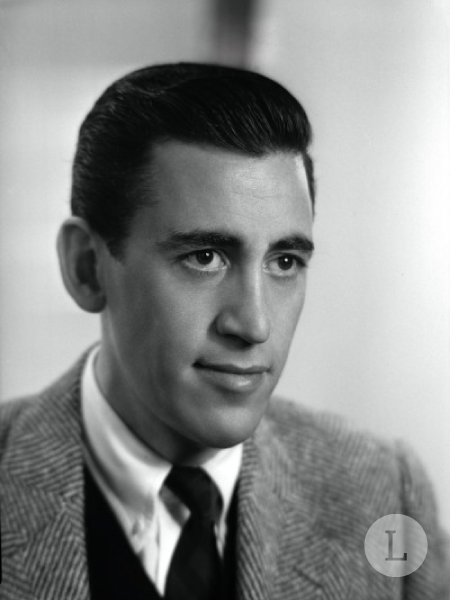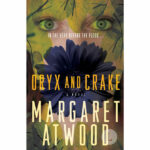A Perfect Day for Bananafish is a short story by acclaimed American writer J.D. Salinger, best known for his novel The Catcher in the Rye. First published in The New Yorker in 1948, the story is the first in Salinger’s Nine Stories collection, which was published in 1953. The narrative centers around Seymour Glass, a World War II veteran who is struggling to adjust to post-war life, and his wife, Muriel. The story touches on themes such as the trauma of war, the superficiality of society, and the search for genuine connections.
BOOK INFO
version: CLASSIC, EBOOK, AUDIOBOOK
number of pages: 20
literary movement: POSTMODERNISM
literary genre: LITERARY FICTION, SHORT STORY
1st edition: 1948
years of writing: mid-to-late 1940s
SUMMARY
The story begins with Muriel, who is on vacation in Florida with her husband, Seymour. She is shown to be preoccupied with her appearance and social status, engaging in a phone conversation with her mother about Seymour’s strange behavior since returning from the war. Muriel’s mother expresses concern for her daughter’s safety, suggesting that Seymour may be unstable. Muriel, however, seems more concerned about her own comfort and dismisses her mother’s worries.
The narrative then shifts to Seymour, who is on the beach at the resort. He encounters a young girl named Sybil Carpenter, with whom he strikes up a conversation. Seymour is drawn to Sybil’s innocence and curiosity, and the two share a genuine connection. He tells her a fantastical story about bananafish, imaginary creatures that become trapped in their underwater caves after gorging themselves on bananas. The bananafish serve as a metaphor for the disillusionment and spiritual emptiness that can result from overindulgence in materialism and superficial pursuits.
As Seymour and Sybil’s interaction unfolds, it becomes clear that Seymour is struggling with deep-seated emotional turmoil, likely stemming from his wartime experiences. He is unable to find solace in the shallow, materialistic world that his wife and her social circle inhabit, causing him to feel increasingly isolated and disconnected. The story reaches a shocking and tragic conclusion, highlighting the devastating impact that the trauma of war can have on individuals and their relationships with others.
MAIN CHARACTERS
Seymour Glass
The protagonist of the story, Seymour is a World War II veteran struggling with PTSD and finding it difficult to adjust to civilian life. He is a complex and enigmatic character, displaying intelligence and sensitivity but also unpredictable behavior. His interactions with the young girl Sybil showcase his affinity for innocence and wisdom.
Muriel Glass
Seymour’s wife, Muriel, is a materialistic and superficial woman who fails to understand her husband’s emotional turmoil. She is more concerned with appearances and social status than with Seymour’s well-being, and their communication is strained and shallow.
Sybil Carpenter
A young girl who befriends Seymour on the beach, Sybil represents innocence and purity. Seymour finds solace in his conversations with her, as she seems to be more understanding and open than the adults in his life. Sybil’s presence highlights the contrast between the genuine connections children can make and the superficiality of the adult world.
Muriel’s Mother
Muriel’s mother is a minor character who serves as a representation of the older generation’s focus on appearances and social standing. She is concerned about Seymour’s behavior and urges Muriel to distance herself from him, further emphasizing the communication gap between the characters.
“Mother, darling, don’t yell at me. I can hear you beautifully,” said the girl.
J. D. SALINGER
TOP 10 POINTS
- Introduction of Seymour Glass: A Perfect Day for Bananafish is the first of J.D. Salinger’s stories to feature the Glass family, with the protagonist Seymour Glass, a complex and enigmatic character.
- Post-War Trauma: The story explores the psychological impact of World War II on soldiers, specifically highlighting Seymour’s struggle with PTSD and his difficulty adjusting to civilian life.
- Communication Gap: Throughout the story, there is a recurring theme of the inability to communicate effectively between characters, particularly between Seymour and his wife, Muriel.
- Innocence and Wisdom: Salinger contrasts the innocence and wisdom of children with the superficiality and materialism of the adult world, as seen in the interactions between Seymour and the young girl, Sybil Carpenter.
- The Bananafish Allegory: The titular bananafish serves as a metaphor for the protagonist’s state of mind, representing Seymour’s feelings of being trapped and overwhelmed.
- Dark Humor: Salinger infuses the story with dark humor, which adds a layer of irony and provides a commentary on the absurdity of the adult world.
- Minimalist Writing Style: Salinger’s concise and minimalist writing style adds depth to the story by leaving much open to interpretation, allowing readers to infer meaning from the characters’ actions and dialogue.
- Symbolism: Various symbols are used throughout the story, such as the color blue, which represents Seymour’s internal struggle and isolation, and the bananafish themselves, symbolizing overindulgence and the dangers of excess.
- The Unexpected Ending: The story concludes with a shocking and tragic event that underscores the protagonist’s internal turmoil and the severity of his post-war trauma.
- Literary Legacy: A Perfect Day for Bananafish is often considered one of Salinger’s best works and has inspired numerous interpretations and analyses. The introduction of the Glass family in this story laid the groundwork for Salinger’s later works, such as Franny and Zooey and Raise High the Roof Beam, Carpenters.
A Perfect Day for Bananafish is a poignant and powerful exploration of the human struggle to find meaning and connection in a superficial and often indifferent world. Salinger’s masterful storytelling and evocative prose create an emotional resonance that lingers with readers long after the story’s conclusion. Through the character of Seymour Glass, Salinger offers a haunting and unforgettable portrayal of the lasting consequences of war and the search for solace in the face of overwhelming emotional pain.
ABOUT WRITER

Jerome David Salinger was an acclaimed American author best known for his influential novel The Catcher in the Rye. Salinger’s works are characterized by their introspective and rebellious protagonists, often grappling with themes of alienation, innocence, and the loss of authenticity in modern society. Despite his literary success, Salinger remained an enigmatic figure, shunning the spotlight and living a reclusive life.



